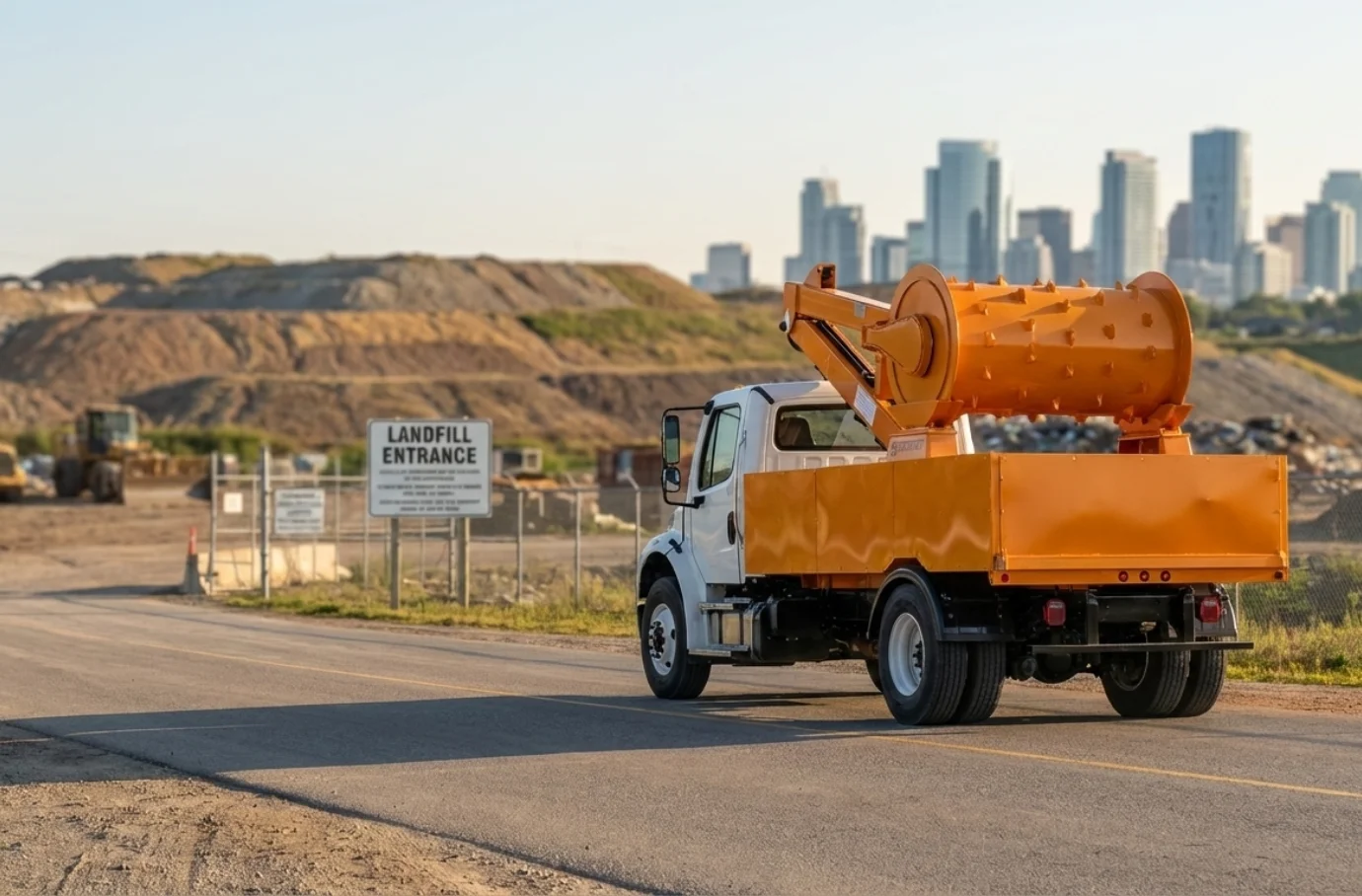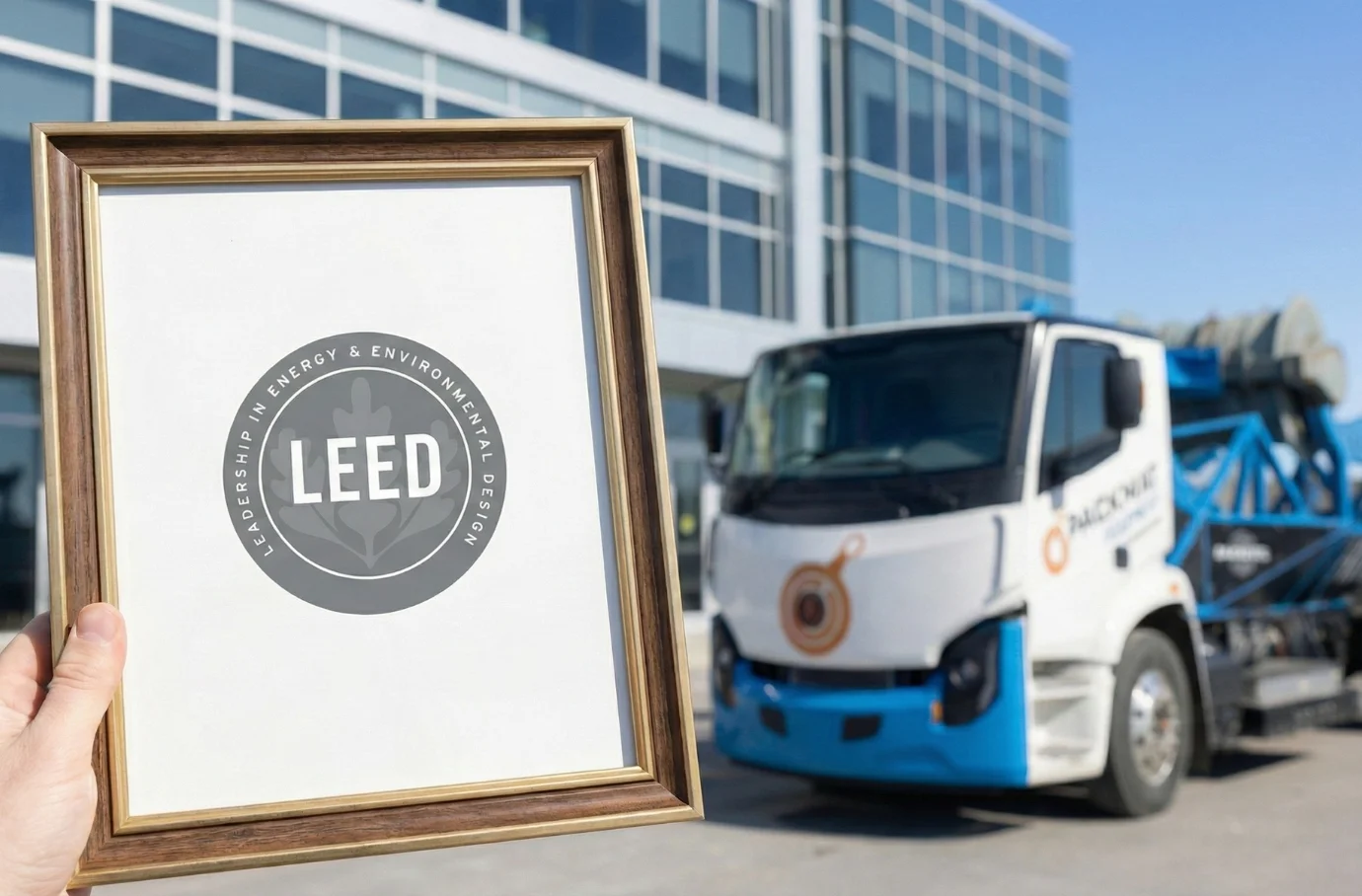Introduction
As urban populations surge and waste generation escalates, municipalities are under immense pressure to manage landfill capacities that are rapidly nearing their limits. Overflowing landfills pose a significant environmental, logistical, and economic challenge, as they can lead to contamination, increased greenhouse gas emissions, and spiraling costs. For municipalities, finding sustainable and effective ways to handle growing waste volumes is imperative. This article explores the crisis of overflowing landfills, effective strategies for waste management, and the game-changing role of waste compaction technologies in prolonging landfill longevity.
The Growing Crisis of Full Landfills
The crisis of overflowing landfills is not just a logistical problem; it’s a pressing environmental and public health issue that has local governments scrambling for solutions. With limited space to allocate to new landfill sites, municipalities face the daunting challenge of managing growing waste volumes within constrained existing capacities. According to the Environmental Protection Agency (EPA), the United States generates over 292 million tons of municipal solid waste (MSW) annually. This burden is particularly concentrated in populous states like California, Texas, and Florida, which consistently rank among the top three waste-producing states in the U.S. California alone contributes over 40 million tons of waste each year, with Florida and Texas each generating millions of tons as well due to their large urban populations and economic activity. This places enormous strain on landfill capacities in these regions, necessitating innovative solutions to manage the mounting waste.
In Canada, similar challenges exist. Ontario, Quebec, and British Columbia generate the most waste, with Ontario leading by producing nearly 12 million tonnes of solid waste annually. The high population density and industrial activity in these provinces contribute to the bulk of Canada’s waste management challenges, and as a result, municipalities in these areas are actively seeking sustainable solutions to alleviate landfill pressure.
As these landfills near or exceed capacity, municipalities face:
- Environmental Contamination: Landfills can leak harmful chemicals and produce leachate, contaminating nearby soil and water sources. This poses serious health risks to communities near landfill sites.
- Greenhouse Gas Emissions: As waste decomposes, it produces methane, a greenhouse gas with over 25 times the global warming potential of carbon dioxide.
- Rising Costs: With landfill capacities diminishing, transporting waste to more distant locations increases operational costs, which are ultimately passed on to taxpayers.
Municipalities are on the front lines of waste management and must adopt proactive, sustainable approaches to mitigate the effects of landfill overflow on their communities. To manage this growing crisis, municipalities must embrace a combination of waste reduction, diversion, recycling, and compaction strategies. By doing so, they can mitigate the environmental impact and reduce the long-term costs associated with overflowing landfills.
Strategies for Managing Overwhelmed Landfills
Given the urgency of the landfill crisis, municipalities must pursue a multifaceted strategy for waste management that doesn’t rely on a single solution. A balanced approach can include:
- Waste Reduction Programs: Reducing the amount of waste generated through public awareness campaigns, promoting composting, and encouraging minimal packaging initiatives.
- Enhanced Recycling and Reuse: Recycling and reusing materials help reduce the volume of waste ending up in landfills, ultimately extending landfill life.
- Waste Diversion Initiatives: Waste diversion, such as incineration for energy production, can alleviate pressure on landfill sites while providing an alternative energy source.
- Waste Compaction Technologies: Compaction can significantly reduce the space waste occupies, prolonging landfill longevity.
Each of these strategies serves as a key piece of the larger puzzle. For municipalities, combining waste diversion, recycling, and compaction into a cohesive waste management strategy enables them to achieve sustainable outcomes, preserving landfill space for the long term.
Expanding Recycling and Reuse Efforts
Importance of Recycling in Crisis Management
Recycling and reuse efforts play a pivotal role in mitigating the strain on overflowing landfills. By diverting recyclable materials from landfills, municipalities can drastically reduce the volume of waste. Furthermore, recycling offers economic advantages, as recycled materials can often be processed into new products, fostering a circular economy that reduces the need for raw material extraction.
Expanding recycling infrastructure is crucial. Many municipalities have successfully reduced landfill waste by enhancing access to recycling facilities and providing clear guidelines on what materials can be recycled. Beyond infrastructure, municipalities can implement waste separation policies and provide collection bins in public spaces, making recycling convenient and accessible for residents.
Education and Incentives
To maximize recycling and reuse participation, municipalities should invest in public education and incentives. Education campaigns that clarify which materials can be recycled and outline the environmental benefits of recycling can drive community engagement. Some effective educational methods include:
- Workshops and Community Events: Educating residents through interactive, hands-on events can increase participation.
- School Programs: Instilling recycling habits in younger generations fosters lifelong environmentally-conscious behavior.
Incentives such as tax breaks, discounts on waste collection fees, or vouchers can further motivate residents and businesses to recycle. Additionally, by implementing policies that reward high recycling rates, municipalities can foster a culture of sustainability.
The Role of Waste Compaction: A Game Changer for Landfill Longevity
Introduction to Waste Compaction Technology
Waste compaction is a powerful tool for extending landfill lifespan. Through compaction, waste is compressed to occupy significantly less space, allowing landfills to accommodate more waste without expanding in area. Compaction machinery works by using high-pressure mechanisms to compress waste, reducing the volume by up to 70%. This reduction translates to a significant extension of landfill life, delaying the need for costly expansions or new landfill sites.
At Packmat Equipment, we specialize in providing innovative compaction solutions that help municipalities make the most of their landfill capacities. By implementing effective waste compaction, municipalities can address both environmental and economic challenges in waste management.
Advantages for Municipalities
The benefits of waste compaction for municipalities are substantial:
- Reduced Landfill Usage: Compacted waste takes up less space, prolonging the operational life of landfills.
- Lower Waste Transport Costs: Compacting waste at collection points or transfer stations decreases the number of trips required to transport waste, leading to reduced fuel and labor costs.
- Decreased Environmental Impact: By optimizing landfill space, waste compaction helps mitigate the need for additional landfill sites, preserving natural habitats and reducing environmental degradation.
Our Solutions
At Packmat Equipment, we are committed to empowering municipalities with effective waste management tools. Our state-of-the-art waste compaction equipment is designed to maximize landfill efficiency, providing municipalities with a cost-effective, environmentally friendly solution for managing overflow. Our machinery is robust, reliable, and adaptable to a variety of waste types, making it ideal for the diverse needs of modern municipalities.
Implementing a Long-Term Strategy for Sustainable Waste Management
As landfill challenges evolve, so too must the strategies used to manage them. A successful, sustainable waste management strategy should incorporate waste compaction, recycling, and waste diversion. Municipalities must approach waste management as a continuous, adaptive process that evolves in response to new technologies, regulatory requirements, and community needs.
Integrating Multiple Solutions
To be sustainable, waste management requires a combination of approaches. Waste compaction, recycling, and diversion should all be part of a comprehensive waste management plan that considers long-term goals. By creating policies that promote waste reduction and leveraging cutting-edge technologies, municipalities can address their current landfill challenges and proactively plan for future waste management needs.
Future Considerations
Investing in technology and infrastructure is essential for municipalities aiming to manage landfill overflow sustainably. As new compaction technologies and recycling processes emerge, municipalities should remain open to integrating these advancements. Monitoring waste data, assessing landfill capacities, and forecasting waste generation trends are all necessary for informed decision-making in waste management.
At Packmat Equipment, we stay at the forefront of waste compaction innovation to ensure our solutions align with the evolving needs of municipalities. By choosing Packmat, municipalities gain a partner dedicated to reducing environmental impact, enhancing landfill efficiency, and supporting sustainable waste management practices.
Conclusion
Overflowing landfills represent a critical challenge for municipalities worldwide. By adopting a multifaceted waste management approach that includes waste reduction, recycling, diversion, and waste compaction, municipalities can effectively manage the crisis and reduce the environmental impact of waste. Waste compaction, in particular, offers a transformative solution, extending landfill life and lowering operational costs. Packmat Equipment is committed to supporting municipalities in their journey toward sustainable waste management, offering advanced compaction technologies designed to meet the demands of modern waste challenges. Together, we can help municipalities manage landfill overflow effectively and build a more sustainable future for our communities.
Easy steps to create a color palette
Lorem ipsum dolor sit amet, consectetur adipiscing elit lobortis arcu enim urna adipiscing praesent velit viverra sit semper lorem eu cursus vel hendrerit elementum morbi curabitur etiam nibh justo, lorem aliquet donec sed sit mi dignissim at ante massa mattis.
- Neque sodales ut etiam sit amet nisl purus non tellus orci ac auctor
- Adipiscing elit ut aliquam purus sit amet viverra suspendisse potent
- Mauris commodo quis imperdiet massa tincidunt nunc pulvinar
- Excepteur sint occaecat cupidatat non proident sunt in culpa qui officia
What is a color palette?
Vitae congue eu consequat ac felis placerat vestibulum lectus mauris ultrices cursus sit amet dictum sit amet justo donec enim diam porttitor lacus luctus accumsan tortor posuere praesent tristique magna sit amet purus gravida quis blandit turpis.
Don’t overspend on growth marketing without good retention rates
At risus viverra adipiscing at in tellus integer feugiat nisl pretium fusce id velit ut tortor sagittis orci a scelerisque purus semper eget at lectus urna duis convallis porta nibh venenatis cras sed felis eget neque laoreet suspendisse interdum consectetur libero id faucibus nisl donec pretium vulputate sapien nec sagittis aliquam nunc lobortis mattis aliquam faucibus purus in.
- Neque sodales ut etiam sit amet nisl purus non tellus orci ac auctor
- Adipiscing elit ut aliquam purus sit amet viverra suspendisse potenti
- Mauris commodo quis imperdiet massa tincidunt nunc pulvinar
- Adipiscing elit ut aliquam purus sit amet viverra suspendisse potenti
What’s the ideal customer retention rate?
Nisi quis eleifend quam adipiscing vitae aliquet bibendum enim facilisis gravida neque euismod in pellentesque massa placerat volutpat lacus laoreet non curabitur gravida odio aenean sed adipiscing diam donec adipiscing tristique risus amet est placerat in egestas erat.
“Lorem ipsum dolor sit amet consectetur adipiscing elit, sed do eiusmod tempor incididunt ut labore et dolore magna aliqua enim ad minim veniam.”
Next steps to increase your customer retention
Eget lorem dolor sed viverra ipsum nunc aliquet bibendum felis donec et odio pellentesque diam volutpat commodo sed egestas aliquam sem fringilla ut morbi tincidunt augue interdum velit euismod eu tincidunt tortor aliquam nulla facilisi aenean sed adipiscing diam donec adipiscing ut lectus arcu bibendum at varius vel pharetra nibh venenatis cras sed felis eget.





.webp)